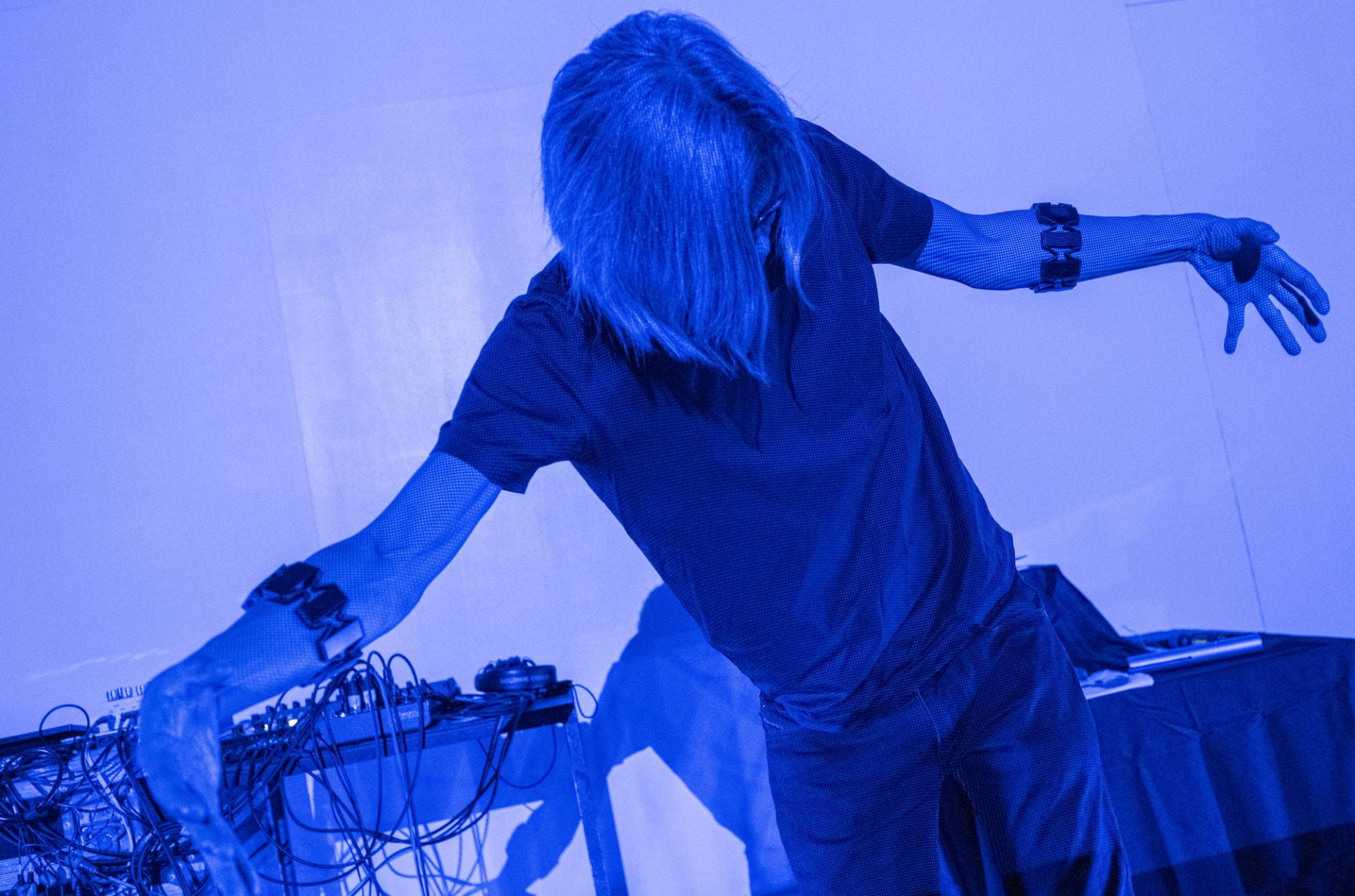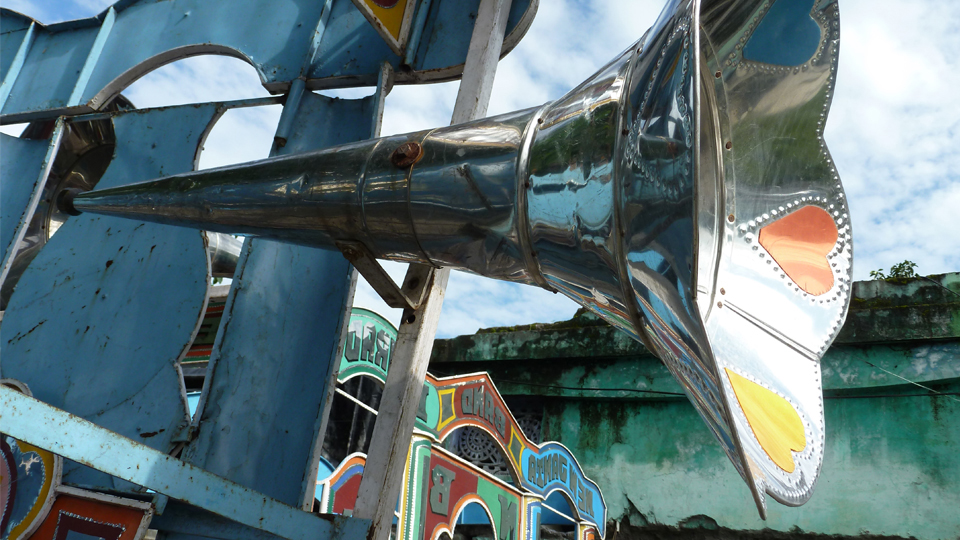 Written by Fabi Pereira
Written by Fabi Pereira
Edited by Regan Bowering
On the 5th of November 2021, Goldsmiths’ Centre for Sound, Technology and Culture (CSTC) teamed up with Iklectik Art Lab to present a day of research exploring the intersections of sound, technology, and the body. Presentations by Masters and PhD students preceded an afternoon of talks by researchers working on a wide range of complimentary research topics. An evening of live performances (open to the public) put theory into practice and brought the event to a spectacular finale.

The founders of CSTC, Professors Atau Tanaka and Julian Henriques, introduced the colloquium and the aims of the CSTC. Also included in the morning’s session was Christina Karpodini’s illuminating discussion of augmented instruments in her works Percussion Arcade, Blocks Sound and Sonic Jacket. The latter involved a jacket equipped with conductive, touch-sensor ribbon tape stripes. When touched, the sensors produce data. This data is collected and processed using Max MSP to generate sound. Gerolamo Gnecchi Ruscone’s work, as he explained in a later presentation, aims to think beyond the numerical study of tides, treating them as a complex process involving the interplay of multiple agents. Aligned with this, Ruscone built an installation comprised of a pendulum and a plate of sand magnetite (a common iron oxide mineral that has strong ferrimagnetism) that records the tidal shifts of the Thames. This data activates stepper motors, and with the use of magnets and other mechanisms, triggers the pendulum and the sand magnetite, generating sound and visuals therefore giving a new voice to the river’s tides. Clarice Hilton’s presentation then explored the usefulness of interactive machine learning for creative work and indie game development. By running hackathons, workshops, artist residencies and game jams, her project builds and evaluates tools using interactive machine learning that supports immersive media creators in designing better movement interaction techniques for players, audiences and performers.
The afternoon session began with Julian Henriques’s presentation of “Sonic Street Technologies” (SST). The ERC-funded project offers new, productive understandings of the social, cultural and political nature of technology. Jamaican Reggae sound systems are one example of such SST, and practitioners (locals that build the sound systems) are actively included in the project’s research process through workshops and conferences. This practice-as-research methodology produces scientific knowledge and alternative approaches to product design and production processes. Dr Zbyszynski then gave a historical overview of artificial intelligence, followed by a discussion of interactive machine learning and its application and challenges in art and research. Tanaka closed the afternoon session with a discussion of musical physiological interfaces and user-centered design (UCD) and “workshopping” (Parkinson and Tanaka, 2013) – working with users as part of research projects.

The evening session of film screenings and highly anticipated live performances included Lou Terry’s Myo Guitar, which demonstrated a refreshing application of physiological technologies (the Myo band EMG sensing device) within the context of pop performance. Dominique Savitri Bonarjee performed Sensor Suit using a knitted body piece with built-in touch sensors. Additional performances included Karpodini’s Sonically Touchable, Iris Garrelfs’ Breathing Through Wires and Tanaka’s Cave Music.

These practitioners engaged in distinct ways with technologically mediated, embodied performance practices. Finally, Gabriel Vigliensoni brought the event to a close with a performance of Clastic Music, which used the R-VAE (rhythm variational autoencoder). The system was designed for the exploration of musical rhythms. It employs machine learning for data representation to encode simple and compound meter rhythms that are common in genres such as footwork and dubstep (Vigliensoni, McCallum, and Fiebrink, 2020). Myriad rhythms gelled with fluidity, offering a sonic invitation for the audience to dance. It felt like the perfect way to close a day of knowledge exchange, experimentation and performance at the intersection of technology, sound, and embodiment.
Written by Fabi Pereira
Edited by Regan Bowering
The complete program can be viewed here:
https://iklectikartlab.com/goldsmiths-cstc-x-iklectik/
References
Jo, K., Parkinson, A., & Tanaka, A. 2013. Workshopping Participation in Music. Organised
Sound, 18(3), 282-291.
Knapp, R. B., & Lusted, H. S. 1990. A bioelectric controller for computer music applications. Computer Music Journal, 14(1), 42-47.
Vigliensoni, Gabriel; McCallum, Louis and Fiebrink, Rebecca. 2020. ’Creating Latent Spaces for Modern Music Genre Rhythms Using Minimal Training Data’. In: International Conference on Computational Creativity (ICCC). Coimbra, Portugal 7 – 11 September 2020. [Conference or Workshop Item]



